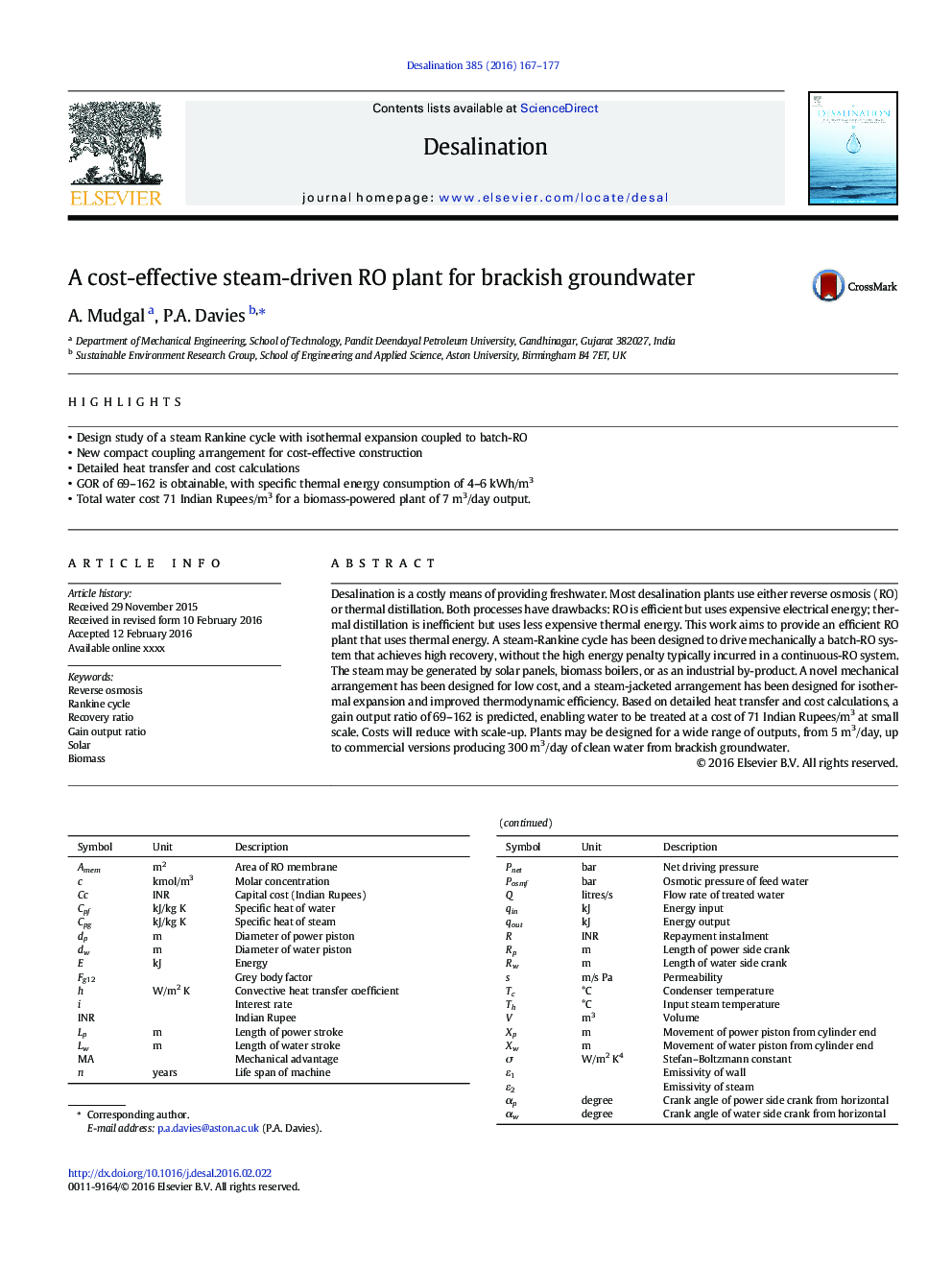| Article ID | Journal | Published Year | Pages | File Type |
|---|---|---|---|---|
| 622907 | Desalination | 2016 | 11 Pages |
Abstract
Desalination is a costly means of providing freshwater. Most desalination plants use either reverse osmosis (RO) or thermal distillation. Both processes have drawbacks: RO is efficient but uses expensive electrical energy; thermal distillation is inefficient but uses less expensive thermal energy. This work aims to provide an efficient RO plant that uses thermal energy. A steam-Rankine cycle has been designed to drive mechanically a batch-RO system that achieves high recovery, without the high energy penalty typically incurred in a continuous-RO system. The steam may be generated by solar panels, biomass boilers, or as an industrial by-product. A novel mechanical arrangement has been designed for low cost, and a steam-jacketed arrangement has been designed for isothermal expansion and improved thermodynamic efficiency. Based on detailed heat transfer and cost calculations, a gain output ratio of 69-162 is predicted, enabling water to be treated at a cost of 71 Indian Rupees/m3 at small scale. Costs will reduce with scale-up. Plants may be designed for a wide range of outputs, from 5 m3/day, up to commercial versions producing 300 m3/day of clean water from brackish groundwater.
Related Topics
Physical Sciences and Engineering
Chemical Engineering
Filtration and Separation
Authors
A. Mudgal, P.A. Davies,
